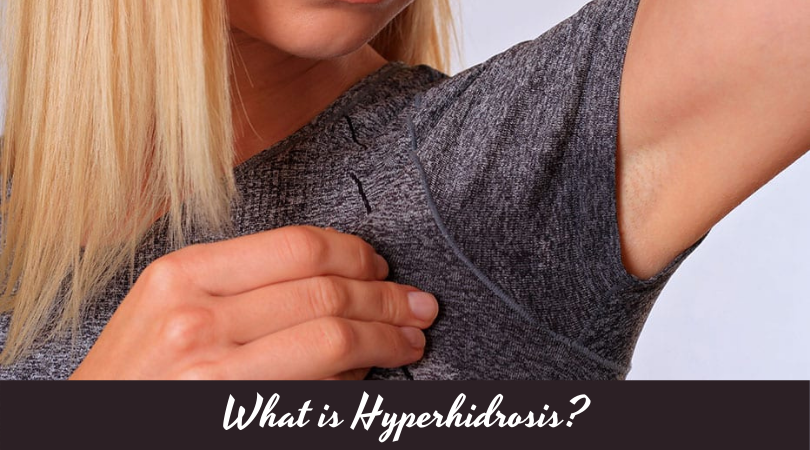 Hyperhidrosis is a pathology that is accompanied by increased sweating throughout the body or in some parts of it. Local forms of the pathological condition are more common. With such hyperhidrosis, increased sweating occurs mainly in the palms and feet, in the armpits and large skin folds.
Hyperhidrosis is a pathology that is accompanied by increased sweating throughout the body or in some parts of it. Local forms of the pathological condition are more common. With such hyperhidrosis, increased sweating occurs mainly in the palms and feet, in the armpits and large skin folds.
Hyperhidrosis symptoms are not only unpleasant from a physical point of view, but also deliver pronounced emotional discomfort. Often, patients with hyperhidrosis significantly limit themselves in communication, refuse to speak in public and often do not even shake hands when meeting friends, as they are embarrassed by their constantly wet palms. In fact, the problem can be easily fixed. You just need to contact the professionalsю The treatment of increased sweating is carried out quickly enough and without significant discomfort for the patient.
Excessive sweating can be common. In this case, sweating is found over the entire body surface and is often a signal of functional disorders in the work of the endocrine or nervous system, as well as a number of infectious diseases.
Local hyperhidrosis is also distinguished.
Depending on the location, the following forms of such increased sweating are distinguished:
Hyperhidrosis can also be:
Hyperhidrosis causes severe discomfort and reduces the quality of life. Knowing about this problem, a person is constantly in tension. Nervous anticipation provokes even more pronounced sweating. The circle is closed, and the patient often does not see a way out of it.
Sweating is a physiological process.
Thanks to it, the following functions are provided:
But if even in a calm and healthy state, in a cool room, you start to sweat actively, it means that something is wrong in the body.
Hyperhidrosis often accompanies diseases such as:
Increased sweating can also be caused by factors such as:
Unfortunately, some people neglect treatment and this leads to a decrease in the quality of life. In fact, it is enough just to see a specialist. The doctor will be able to fix the problem.
Treatment of excessive sweating should be done if you are constantly accompanied by signs of hyperhidrosis.
The cause of the pathology is often determined by the doctor visually already at the first appointment. Hyperhidrosis, provoked by psychogenic factors, is especially pronounced. Seeing a doctor is a stressful factor, so the patient often sweats a lot during the consultation. The doctor immediately sees the problem, determines the type of pathology.
A number of diagnostic methods are also used to detect hyperhidrosis.
Among them, there are:
Diagnostics includes the following laboratory and instrumental studies:
For a complete patient’s examination, other tests may be prescribed. The need for a comprehensive diagnosis is due to the fact that excessive sweating can only become a sign of functioning disorders of the organs of the cardiovascular, nervous and other systems.
Excessive sweating, which is treated without surgery, is usually triggered by a psychological factor. Various drugs are used for therapy. They are selected only by a specialist. Special medical antiperspirants are also commonly used. They are used on the feet, arms, armpits and even the face. These products differ from standard cosmetic products by a high content of active substances.
Excessive sweating is also treated with iontophoresis. Ionizing substances and currents can arrest the functioning of the sweat glands. Unfortunately, iontophoresis has a number of contraindications. The procedure is not carried out when:
Botulinum toxin is actively used for therapy. The introduction of the drug allows you to stop sweating in certain body parts. The technique is especially effective for axillary hyperhidrosis. Botulinum toxin injections are not performed when:
Treatment of the excessive sweating causes is also carried out using the curettage technique. The method is surgical and consists in the destruction of the sweat glands using a curette (an instrument for scraping soft tissue). The procedure is performed under local anesthesia and requires incisions. The incision is usually small (about 1 cm). Through it the instrument is introduced. The curette is connected to a vacuum pump that removes tissue. The effect after curettage lasts up to six months. This is because new sweat glands can form in the body. The procedure should be resorted to only if other methods do not give the desired result. Curettage is an operation that can cause sensory impairment due to damage to nerve fibers.
Laser exposure is also referred to as modern methods of sweating treatment. With its help, the destruction of the sweat glands is ensured. The procedure also involves making small incisions through which an optical fiber is inserted under the skin. Recovery after the intervention takes less time than after traditional curettage.
There are a number of other treatments.
When selecting them, specialists always focus on:
© 2025 www.curesweatypalms.com. All rights reserved.